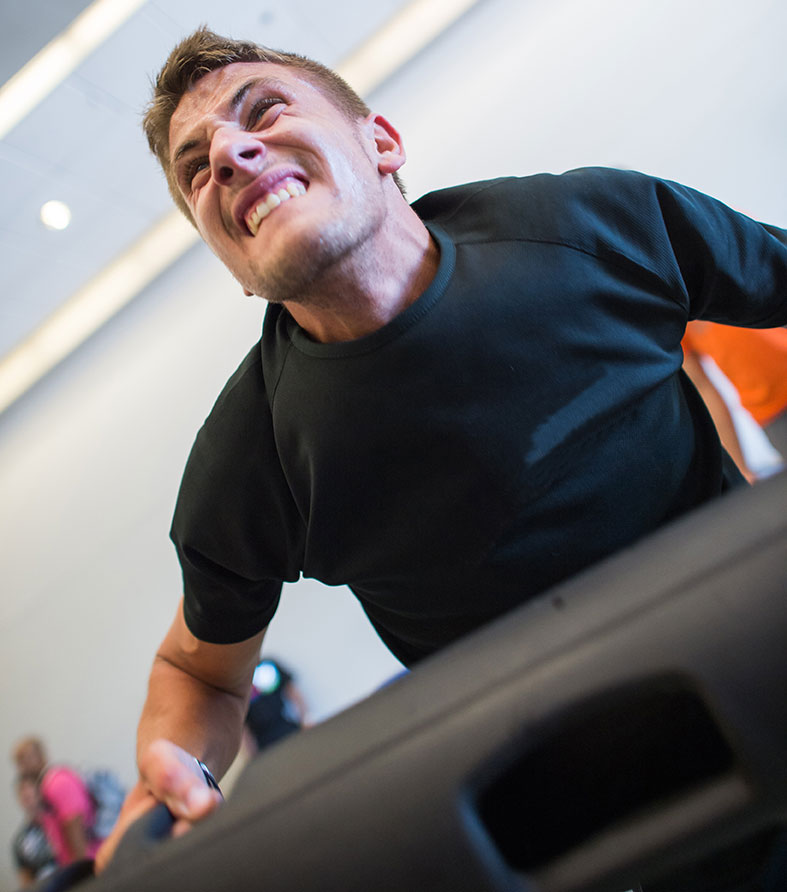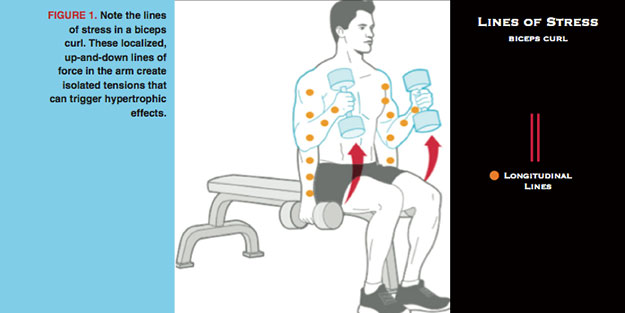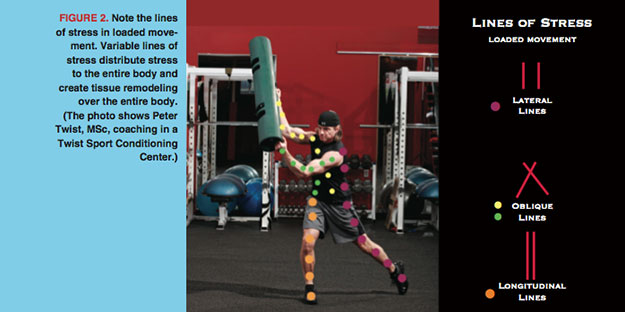
Loaded Movement Training
Back in Canada, when my colleagues and I developed strength and fitness programs for hockey athletes, we began to notice something fascinating: Farm kids had distinct advantages when their “farm strength” was transferred to the ice. These young athletes were stronger on the puck, stronger in front of the net when battling their opponents, and stronger in odd body positions.
What was going on here? Farm kids did not exactly have training as they grew up. They had chores—throwing hay bales, hoeing weeds, herding livestock and so forth. And because chores must be done every day, these kids exemplified the bedrock principles of what we came to call loaded movement training: consistently combining an external load with specific, task-oriented motions to strengthen the body in ways that do not happen with standard weight training or body weight exercises.
This article will highlight the key concepts of loaded movement training and demonstrate how it can be a missing link in training and conditioning.
Why Chores Make All the Difference
As we worked with young hockey players, the strength differences between farm kids and city kids became so pronounced that we felt compelled to scrutinize what the farm kids were up to. Our journey of discovering how farm kids moved mass became the genesis of developing the ViPR® and of articulating loaded movement training as an authentic fitness concept.
Think about tossing, lifting or shifting bales of hay: Mostly it’s all about moving around a mass, moving with a mass, and lifting a mass up and down. We know this as manual labor, something few us do these days. Sitting for hours at a stretch, combined with moving in fixed patterns, has been our “norm” for two generations. Compare this with the thousands of previous generations who spent their entire lives moving their bodies with a load, be it bales of hay, piles of wood or farm implements.
Simply put, our bodies evolved to move with loads. That’s why it’s so critical to explore ways to include more loaded movements in our training.
Look to Biology for the Answer
Studying biological and morphological behaviors reveals key basic adaptations inherent in the human body. Namely, changing postures and taking on external loads are critical to our health and survival. We need to load our bodies with mass and move around to function optimally. If we don’t, our bodies fall into dysfunction and decay.
Epidemiological studies in societies where citizens live incredibly long, healthy lives have discovered that intermittent movement throughout the day, every day, is of upmost importance (Buettner 2012). Regular movement—not just specific diets or environments—is the common link among populations that enjoy great longevity.
Our modern industrialized societies often oblige us to sit at work, at home and during our commutes. We have lost the consistent movements of traditional societies, and it’s no coincidence that our bodies are experiencing more disease and decay than ever before.
Regular movement is the antidote.
Forces At Work
Moving with external loads provides the motion that our biology requires while subjecting our bodies to various “lines of stress” that trigger the remolding of tissue. This is how muscle, fascia, bone and skin self-assemble (Kjaer 2013).
The organic stimulus of different lines of stress in loaded movement offers the right amount of motor and mechanical variability to build strong and stable bodies that are mobile and resilient enough to function optimally. Moreover, loaded movement training helps provide stability and strength in a multitude of positions. Thus, this type of training can be a key component of a well-balanced conditioning program.
“Transitional” Movement
Transitional movement represents task-oriented, full-body motion patterns. It happens when we use our entire body to move from one point to another. Somebody working around the garden, playing a sport or performing any full-body activity is engaged in transitional movement.
Transitional movement organizes and harmonizes all joints in the kinetic chain. Moving the whole body reinforces the fundamental principles of chain-reaction biomechanics and function. Integrating multiple-joint motions is the biomechanical way to move stress away from specific areas in the body and introduce stress to the whole system as it shares the load.
External Loading
External loading via resistance training represents the external mass we introduce to human tissue. Most training moves external mass along linear patterns (see Figure 1). While this has tremendous benefit, the stimulus is incomplete.
Think of multiple, variable lines of stress introduced to a body baling hay (see Figure 2) versus a repeated set of biceps curls. Both can be tremendously beneficial, but they provide vastly different stimuli and thus yield very different adaptations. Both protocols can lead to function and performance gains.
Key Concepts of Loaded Movement Training
Studies have found that loaded movement training challenges and conditions muscle, fascia, the nervous system, skin and other systems of the body (Hinz 2013; Leonard 1998; Shanahan 2009; Siff 2003). The intention is not to replace current training methods with loaded movement training, but rather to add loaded movement training into a structured program.
Scientific Justification
Moving with a load has multiple advantages:
- Building stability and mobility. While stability and mobility may seem incompatible at first glance, together they represent the only way the human body can most efficiently move without wasting metabolic energy or minimizing movement performance (Levin 1997). Stability at the expense of mobility leads to rigidity, which is the enemy of all biology.
- Creating momentum. Certain body tissues—namely, muscles, fascia and skin—are designed to capture and store momentum as potential kinetic energy that will be repaid. Harnessing momentum makes the body stronger, more efficient and more resilient.
- Turning muscle off. Momentum from movement-based load training allows muscles to down-regulate (turn off in a general sense), which increases neural adaptations and sensitivities (Leonard 1998). This helps develop quicker reactivity, eliminating critical delays in motor decisions as our nervous system reacts to sensory information. This significantly reduces our risk of noncontact injury.
Variable Loading Patterns
Variability is essential to helping heart rate response, nervous system adaptation, and tension regulation (through muscle, fascia and skin architecture) to maximize their biological functions and adaptations.
Let’s revisit our farm kid. He picks up a bale of hay, puts it down and repeats this intermittent loading. Once the first bale is in place, the next bale has to go in a different spot. This forces the body to change its movement paths to load the bales. Mechanical lines of stress are now variable and no longer fixed in a set path.
Varying the mechanical load on a biological structure has straightforward benefits. To adapt, fascia and skin require the introduction of external mechanical force, applied in three ways: through different loads, at different speeds and with different angles (Huijing 2007).
That means we need three ways to subject our bodies to mechanical load. The result: We maximize different kinetic load paths through the fascia and skin as tissue (such as collagen) remodels itself around variable lines of stress (Davis’s Law). This creates a more robust anatomical construction with greater bodywide shape stability. If a farm kid ever gives you a bear hug, you will remember this point.
It is important to note that these loading patterns must be submaximal in nature. Remember this relationship:
- As % of 1-RM goes up, degrees of movement freedom must go down.
- As % of 1-RM goes down, it is best if degrees of movement freedom go up.
If strain patterns are constantly repeated along fixed paths—the city kid doing reps/sets in the gym—adaptations may be localized to specific lines of stress, which reduces three-dimensional stability.
Performing Integrated Tasks
One central idea of a gym workout is a periodized approach to resistance training: stressing a specific area of the body, such as a shoulder day, a leg day and so on. We then rest that area while stressing other parts of the body. This is not an option for farm kids. Every “workout” on the farm puts the entire body to work.
Whether it is shoveling, building, moving livestock or moving machinery, every chore is a complete body drill. This must be the case on the farm; otherwise the farmer would not last through the day.
Quite simply, movement-based resistance work involves transmission of forces along longitudinal and adjacent lines of anatomy. Based on the principle of mechano-transduction (Kjaer 2013), this causes tissue remolding along longer lines of stress. This facilitates a more thorough layering of collagen, the amino acid fibers that support the body, promoting a stronger, more stable and more resilient body.
This is an important characteristic. The more dynamic and resilient the collagen, which is most prevalent in fascia and skin, the more shape support and bodywide stability a person will have (Chen & Ingber 1999). This yields a double savings, as muscle will not need to carry an extra burden to fill this role alone. If skin and fascia can take up more of a stabilizing role in the body, muscles will not need to, leading to more efficiency (less use of muscle) and better joint kinematics, since inappropriate muscle contraction may often limit the natural glide and roll of joint motion.
With shared responsibility for stability coming from the skin/fascia/muscle, the result is more stability through the notion that the whole is greater than the sum of its parts, which allows more force generation, knowing we can produce only as much force as we can stabilize.
Intermittent Loading And Tissue Hydration
Intermittent (or interval) loaded movement involves picking loads up, putting them down and moving them around. Derek Vandenbrink, MA, defines this as loaded intermittent functional exercise (LIFE), which helps to explain farm kids’ strength.
A key benefit of loading the body intermittently with movement is the hydration of tissues. Movement-based intermittent loading transports fluid around the body via osmotic flow (such as pressure gradients) that can “push” water into tissues such as fascia.
The vast majority of the volume of fascia is water. And since water needs to bind in an orderly fashion along the surface of the sugar-protein fibrils within the ground substance, pressure gradients will help move water into fascial tissue so binding can occur (Klingler 2012). The true hidden benefit here is that hydration in fascia has a direct impact on bodywide stability. Research shows a link between increased hydration in fascia and increased fascial stiffness (Klingler 2012). More stiffness in the fascia means a more stable body, which can then generate more muscular force output in numerous body positions.
In contrast, forceful and held contractions cause an efflux of water out of muscle and fascia. Think of the squeezing muscle as a fist forcing water out of a sponge. Holding muscular contractions with isolated stress can have measured effects with time under tension, hypertrophic responses and certain hormone expressions—all of which can be positive. However, it can also dehydrate the tissues during the exercise and for up to 48 hours after an exhaustive workout (Myers 2014).
This dehydration may be a dark side if we look beyond the muscular system: Fascia can lose stiffness, causing a loss in bodywide dynamic stability.
Fostering Positional Stability And Strength
Positional stability and strength are what give the body its ability to guide stable motion and maintain force capability through numerous positions and motions. Think of it as stability and strength in specific positions.
Stability and rigidity are not the same. If they were, it would be very detrimental to our bodies. Having stability without concurrent mobility is destructive to human function. We are stable with mobile segments by design (Levin 1997), and both abilities must be available simultaneously. This is how we accomplish tasks that require us to move loads outside the four walls of a gym.
Having positional stability and strength means being able to excel in odd-position lifting and shifting. To remain biomechanically sound, however, we adopt three cues (adapted from Chuck Wolf, MS) to ensure joints and segments are not overloaded:
- Maintain length in the spine throughout a movement. Spinal movements should be limited, and intervertebral disks should not be compressed at any position in the motion.
- Initiate the motion from the hip complex. This often requires the feet to be in motion. Hip motion will drive the spine to follow and mitigate stress away from the lumbosacral junction, where a lot of force can be focused if we are not careful.
- Reach with the scapula. This keeps the body engaged as a functional unit and moves stress away from the shoulder
complex and toward the opposite hip.
Dynamic stability and strength are position-specific. If people can train stability and strength to graduating thresholds over time, functional capabilities can improve concurrently.
Often, when watching a sporting contest we’ll see athletes lose position in a play while their bodies attempt to gather in postures they are unaccustomed to. Successful high-performance athletes find ways to synergize neural flow with stability and strength in a multitude of body positions.
Increasing movement ability gives us choice. Limiting movement ability, by contrast, limits movement choice, increasing the risk of injury and degrading performance.
Beginning Loaded Movement Training
I am often asked, “What is the simplest way to incorporate loaded movement training into a fitness program?” My advice:
- Add loaded movement training into your current protocols. You don’t have to stop anything you are doing. Think of this new addition as a body exercise rather than a body-part exercise.
- Get systematic. With loaded movement training, as with any new training element, you should take a systematic approach in order to appropriately manage stressors and demands on the body. Begin with lighter loads, simpler movement patterns and smaller ranges of motion before progressing. As always, exercise stressors should be managed along with all of the other daily stressors a client/athlete encounters.
- Rest more between sets. During loaded movement training, the complexity of movement may be novel. It is important to remember that a client may experience more neural fatigue than usual and require more rest between sets.
- Mind the back, hips and feet. With loaded movement drills, always remember to maintain length in the spine, initiate the drill with the hips, and move the feet as needed. When reaching, use the scapulae instead of the hands.
- Offer more sessions. Because loaded movement training is integrated, force and mechanical trauma will be mitigated and not localized. That means clients should be able to tolerate more frequency in a given week.
Timing Considerations
- Most beginners can comfortably perform loaded movement training twice a week.
- More experienced people can perform this training three times per week.
- Seasoned clients/athletes should perform some loaded movement training with every session.

